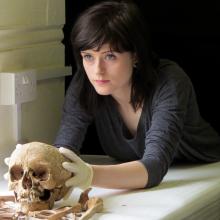
Archaeologists say skeletons discovered during tramwork preparations have told them a lot about how people lived and died in Leith hundreds of years ago.
City of Edinburgh Council and Headland Archaeology dug up the remains of nearly 400 people from beneath Constitution Street in 2009. All are now in permanent storage.
They constitute what City Archaeologist John Lawson describes as ‘one of the largest and most important urban excavations of human remains undertaken in Edinburgh and Scotland in recent years’.
Around 300 of the skeletons are complete, but many have been disturbed by Victorian engineers taking a no-nonsense approach to laying utilities.
Forensic modelling by postgraduate students like Hayley Fisher (pictured top-right) at Dundee University has allowed digital reconstructions to be made of three of the dead people’s faces: a boy, aged 13–17 and a woman aged 25–35 who both died in the late 14th or early 15th century; and a man aged 25–35 who died in the mid-16th–17th century. The results can be seen at the foot of this page.
Lawson is struck by how alike they are to modern-day locals, and indeed isotopic analysis of 18 skeletons has shown that they lived within 30 or 40 miles of Edinburgh.
However, it is not possible to draw confident conclusions from this about the Leith population – the remains may have come from an area of the graveyard reserved exclusively for nearby residents rather than for more cosmopolitan merchants and sailors.
Richard Lewis, CEC’s Culture Convener, says ‘Edinburgh has an undeniably rich and interesting history, but work like this means the whole city can truly appreciate our heritage’. It's a statement which sounds quite nice the first time you hear it but, after a few moments' reflection, makes hardly any sense at all. Convening culture is evidently trickier than it looks.
The details below are drawn almost verbatim from CEC's press release issued earlier this afternoon.
Adolescent male, aged 13–17
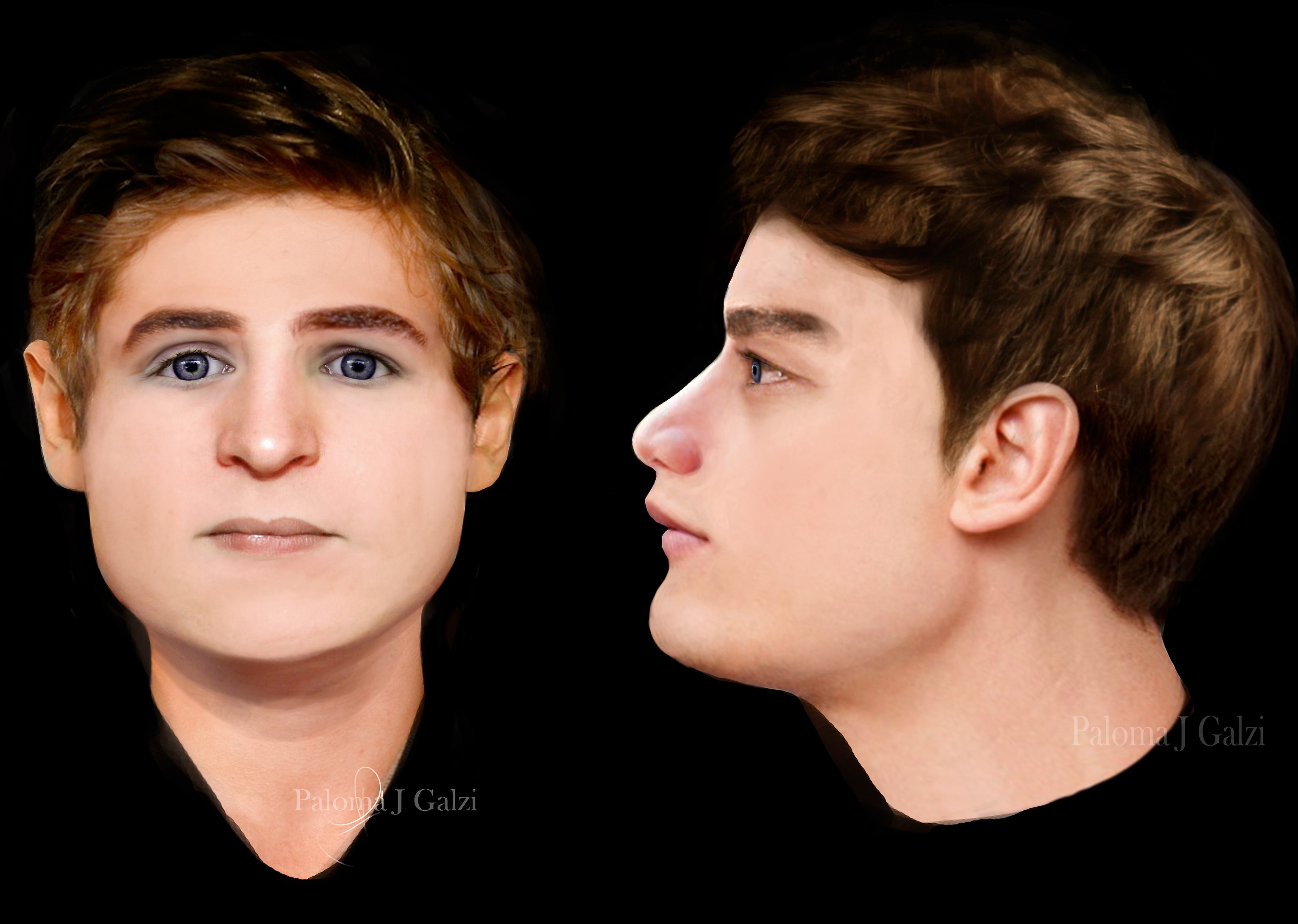
Died: 1393–1445
Strontium and Isotopic analysis indicates he grew up in or around Leith and Edinburgh. Carbon and Nitrogen analysis indicates that he had a predominantly animal meat/dairy diet with some marine fish, similar to diets of those from medieval Yorkshire but less marine fish than other parts of Scotland, i.e. Aberdeen and Orkney.
The date of death suggests that he was buried within the graveyard associated with St Anthony’s Hospital, though may be one of the first burials associated with South Leith Parish Church if the early 1438 foundation date is to be believed.
Adult female, aged 25–35
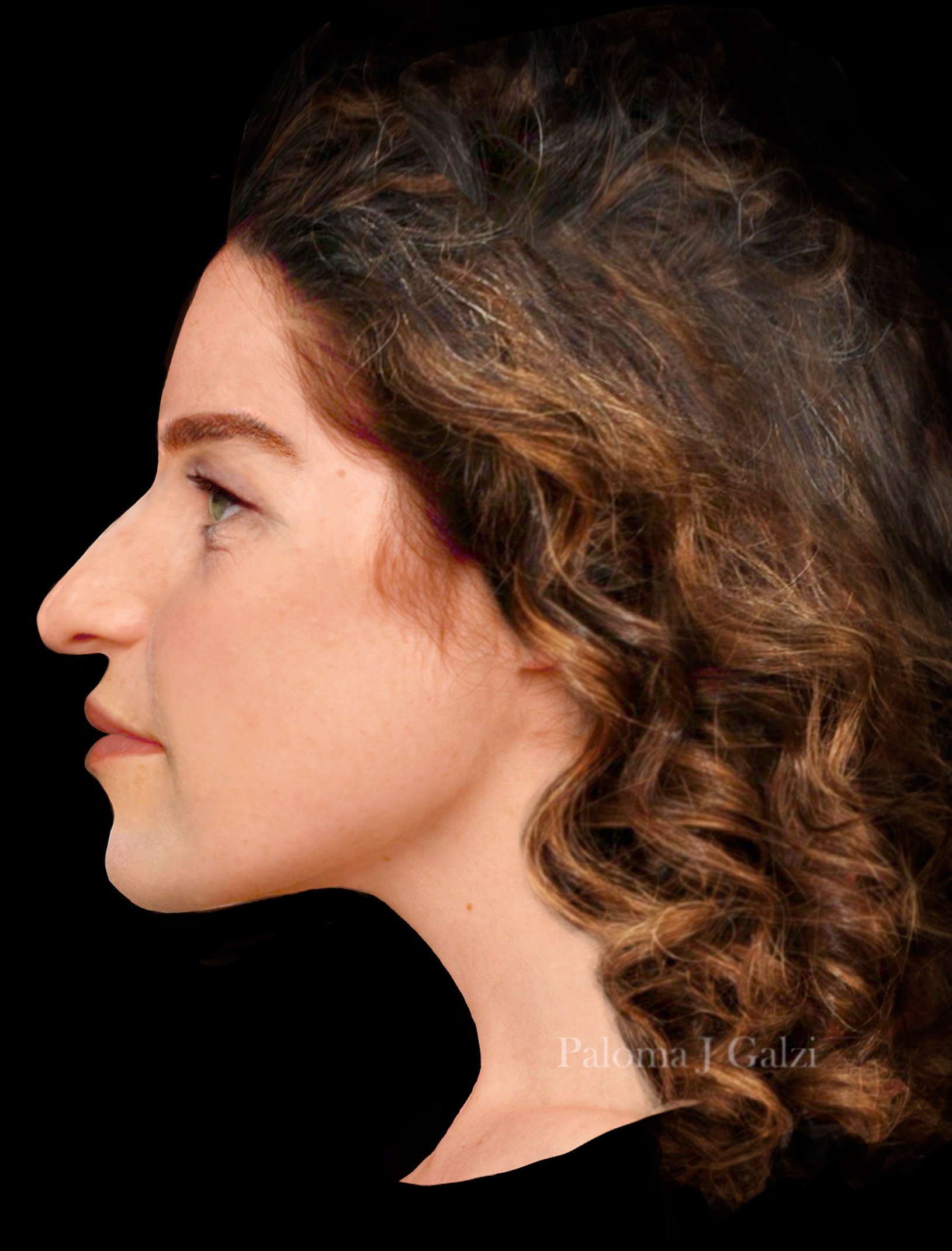
Died: 1360–1435
Height: 151cm (4' 11').This is 4cm shorter than the average height for a medieval woman in this graveyard population which is on average 155cm (5' 1’’) which is in turn shorter than the UK average of 5' 2.5’’
She was buried in a communal grave comprising two other adult females and a child aged between seven and 12. This date of death indicated that she was buried within the graveyard associated with St Anthony’s Hospital. It is unclear if her death and those buried with her were related to the plague or some other infectious disease.
Adult male, aged 25–35
Died: Mid-16th to mid-17th century
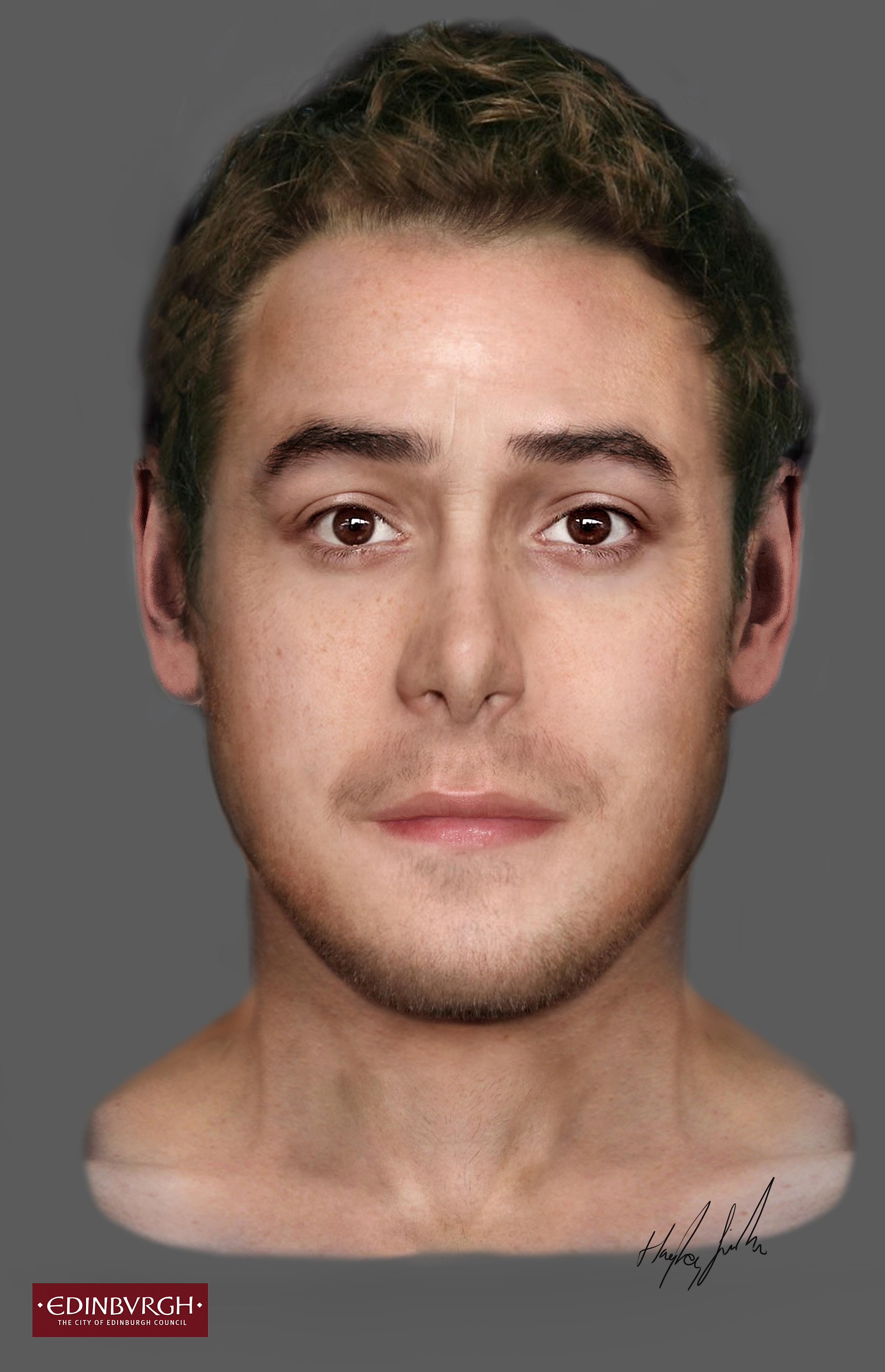
Key Facts
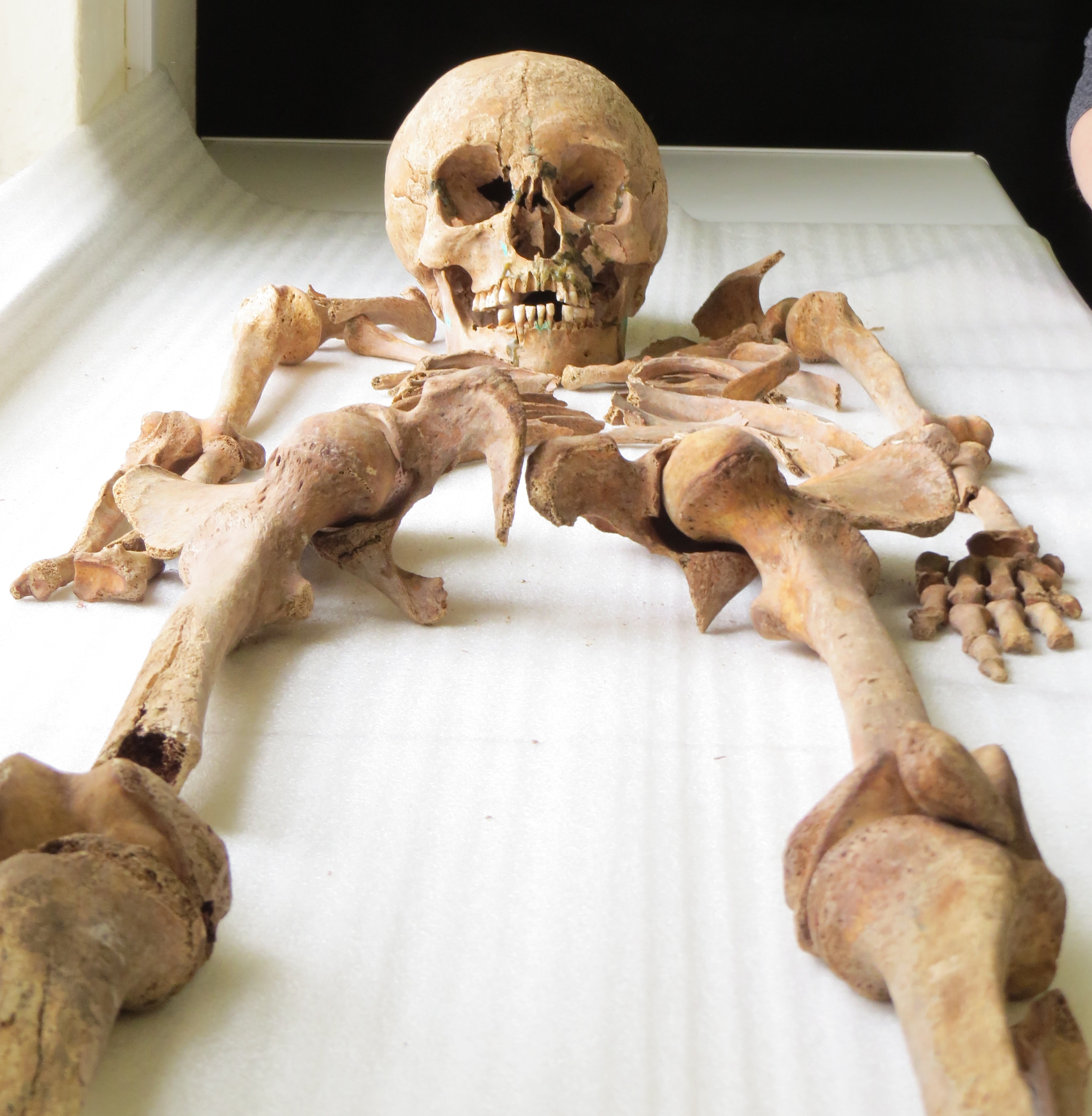
- 33 bodies dated with dates ranging from 1315 AD – 1638 AD.
- Around 20% of burials pre-date the estimated date of establishment of South Leith Parish Church in 1438 with around 33% earlier than the official foundation date of 1483.
- No Graves appear to post-date 1640. This may be an effect of the plague and 1649 Siege resulting in a smaller post-plague burial ground. This could also explain actions of Church Council In 1790 who declared they knew of no burials in this area.
- Average heights for adult females was 155cm (5ft 1’’) and for males 169cm (5ft 5.5’’). These are shorter than for the UK averages of 164cm / 171cm.
- The vast majority (90%) of the population died before they reached the age of 30–35, with with peaks on mortality occurring in older children (7–12).
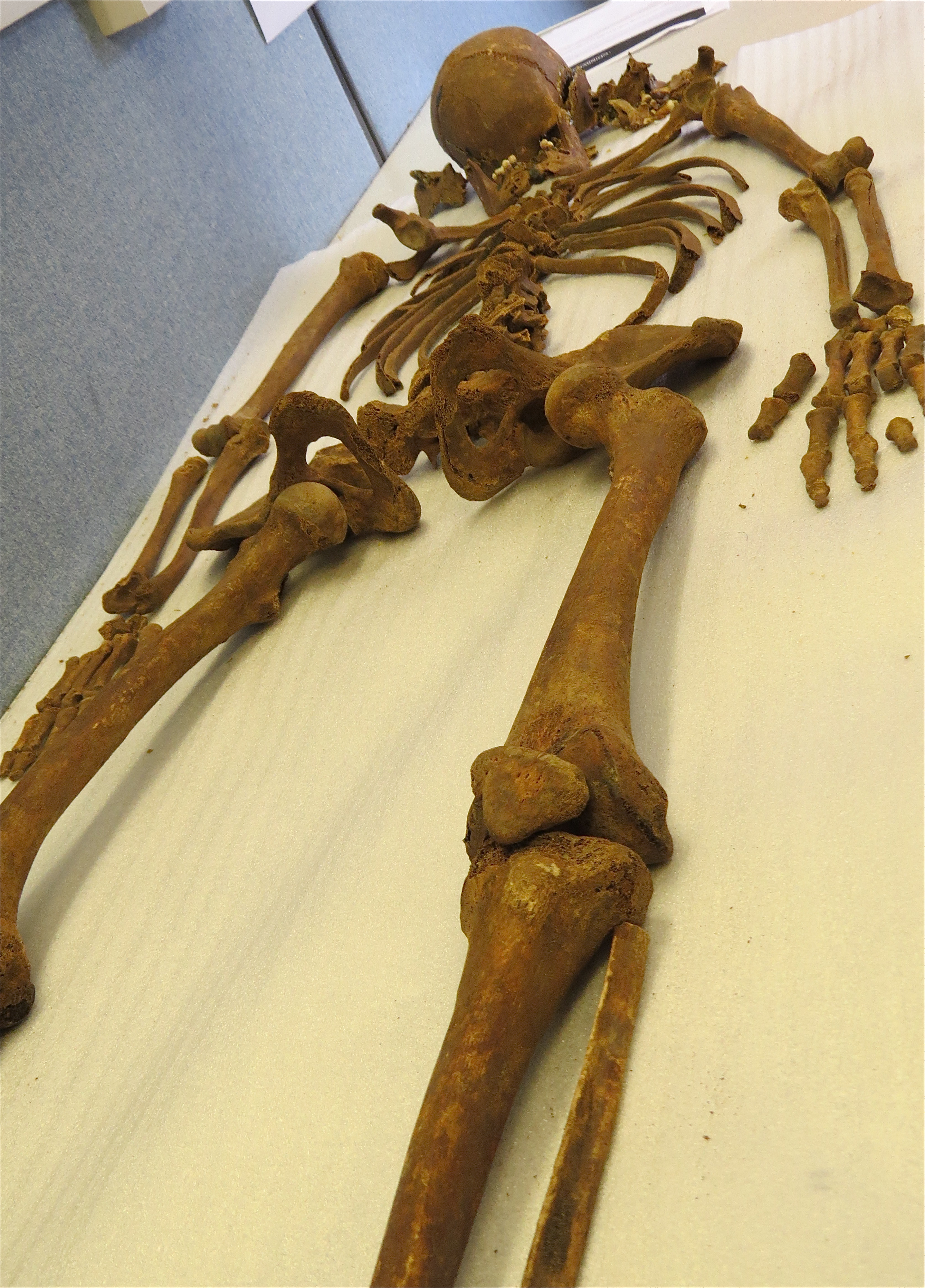
- The vast majority were buried in the Christian mannerr (east–west) on their backs. However two children were buried face down.
- Strontium and Oxygen Isotopic Analysis undertaken by Dr Kate Britton, Aberdeen University, of a sample of 18 bodies indicates that around 80% spent their childhoods in the Leith or Edinburgh area. The remaining individuals grew up within a radius of 25–50km.
- One burial dated between 1426 and 1516 provided possible evidence of women dying in late pregnancy or as the result of child birth, with the remains of neonate bones found across the pelvis.
- Three communal graves were discovered, made up predominantly of adult females and children or adolescents.
